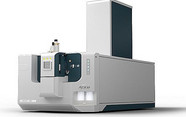Protein Molecular Weight Determination: SECMALS vs Conventional Calibration

contributed by Malvern Panalytical |
Abstract
In this application note, a number of proteins are separated using SEC. Their molecular weight is measured by multi angle light scattering (MALS), or by conventional calibration. The differences in results are discussed. Pepsin and BSA oligomers are characterized by the SEC-MALS system.
Introduction
The physical properties and behaviour of proteins in solution depend on many factors to do with the purification and formulation of the protein as well as its own innate properties.
Size-exclusion chromatography (SEC) is a powerful tool that is commonly used to look at factors such as recovery, molecular weight and aggregation of proteins. The principle of SEC involves separating a sample as it travels through a porous but inert column matrix. While smaller molecules penetrate the pores more deeply, larger molecules are excluded and thus travel through the column faster. The result is a separation based on hydrodynamic volume but the desire is usually to know the molecular weight. Previously, molecular weight was estimated by comparing the elution time of an unknown protein to that of standard globular proteins of known molecular weight which we term 'conventional calibration'.
This was done using a single concentration detector such as ultraviolet (UV).
Log in or register to read this article in full and gain access to The Analytical Scientist’s entire content archive. It’s FREE!

















